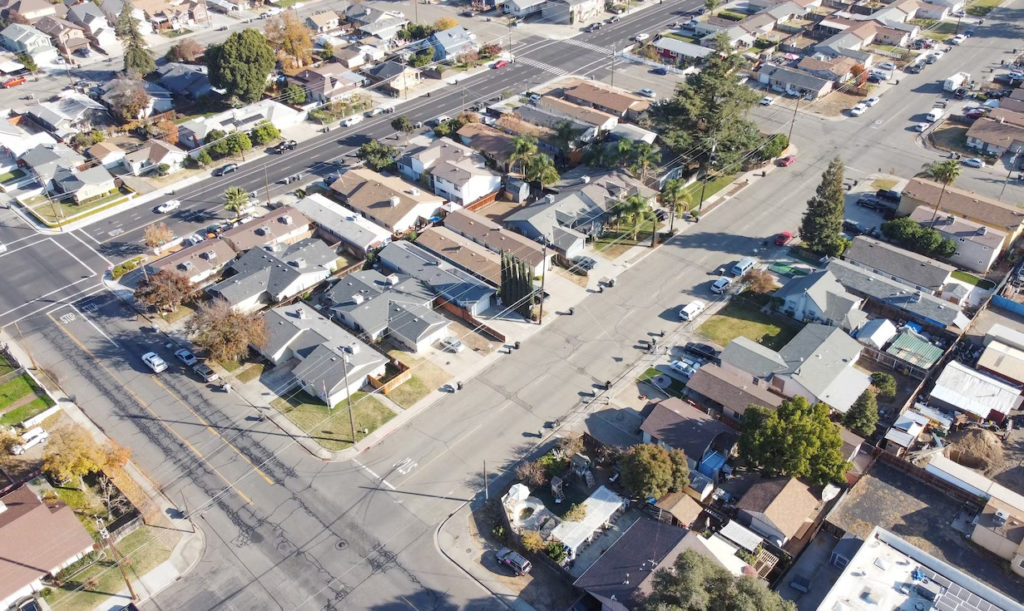Last year, our small replant in Linwood, Kansas, held a bluegrass music festival at a local football field to bless our town and serve our community. It was an evening we won’t soon forget.
To our surprise, we had 500 people show up for the five-hour event. We had four great bluegrass artists entertain us for four hours. We had 10 food trucks to make sure our bellies were full. The concert also helped raise money to stop human trafficking. Plus, two years after a devastating tornado hit our town, we celebrated the first responders who sacrificed so much to help our town through those difficult days.
Most importantly, we had a prayer tent set up. Between music, we’d invite people to come to the tent so we could pray for them. We had great opportunities to pray for people during that time – and many of those experiences turned into gospel conversations.
The event turned out so well that we’re planning to do it again later this year.
For us at Linwood Baptist Church, the bluegrass festival was one example of how we’re trying to engage our community. If you’re trying to replant a church, discovering some ways to engage your community is critical.
You might look at your church and say, “We’re just too small to do anything like that.” We were running about 60 people – including kids – when put on the event. When you have 20 or 30 adults who are passionate about caring for your community, you can do much more than you think. Do you have a guess as to how many of the 500 festivalgoers came to church the next day? Zero. And that’s OK.
We didn’t create the bluegrass festival to get people into our church. We’d obviously love to have them. But we did it to get the 20 to 30 adults in the church into the community. Mission accomplished!
I’m convinced your church can do this, too. Here are four ways to get started.
1. Be a missionary in your community
You’re a pastor to your flock. The book of Hebrews 13: 17 tells us that we’ll give an account to the Lord for how we managed those in our care. But you’re also a missionary to the community around your church, and you must take that role just as seriously. You must put just as much work into being a missionary in your community as pastoring your flock. Before anything else, missionaries listen. They discover the hurts in the community and run toward those hurts.
2. Develop some partnerships outside your church
Be involved in your local, state-wide and national denominational networks. Find some other networks where you can partner with other churches across denominational lines.
Resources always flow from activity. For the most part, we put on the bluegrass festival by ourselves. But we didn’t pay for it by ourselves. Our small church couldn’t have done it alone. We leveraged the resources of our denominational partners to help.
Don’t hesitate to reach out to local churches around you and build your own networks in your community. We’re all in this together. You’ll find other like-minded churches that want to help you engage your community.
3. Become part of the fabric of your community
Our city council meets in a room that’s no more than 14 feet wide and 30 feet long. There’s room for the city council and about six other people. Just about every time the city council meets, one of those six visitors comes from our church. We want the town to know we care.
We’re very involved in our schools. One of our elders is an assistant coach, so he keeps us aware of what’s going on.
If you want to engage your community, you need to know what’s going on. By spending time in city council meetings and in our schools, we learn what the needs are and how we can best help to meet them.
4. Make decisions based on reaching people, not keeping them
Church planters get this. They aren’t focused on keeping people in their core group. They focus on engaging new people. When they make budgetary or strategic decisions, it’s about the people not in the building on Sunday morning.
But somewhere along the way, the situation changes. The church starts to focus on keeping the people they have. Instead of aligning the music of the church to the interests of the people you’re trying to reach, you make sure it’s pleasing to the people already in your pews. Instead of investing in service projects in your community, you invest your resources in making your congregation more comfortable.
That’s dangerous. If you want to engage your community, you must not forget your community when making decisions.
No matter how big your church is, you can engage your community. But you need to step out of maintenance mode and begin to look at your community like a mission field. Listen to your neighbors. Find out where the pain is. Then reach out to partners that can help you meet those needs.
Your replant can do this.
Published August 11, 2022




